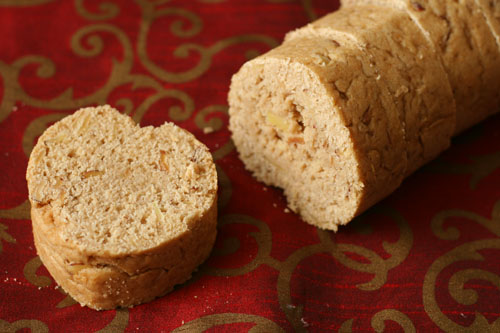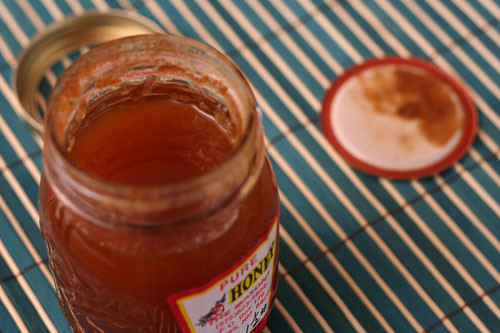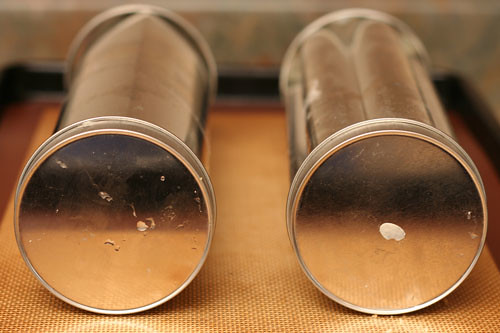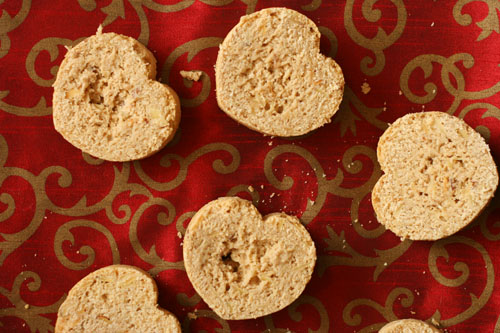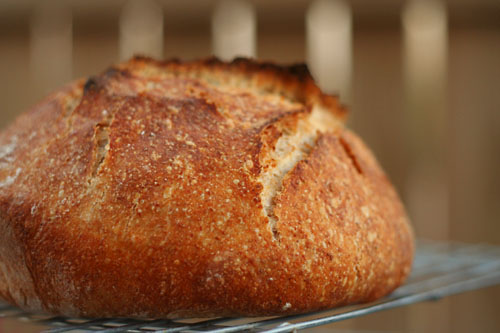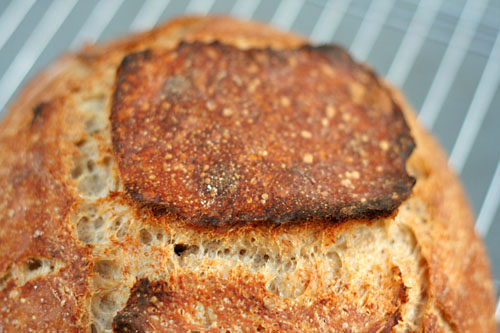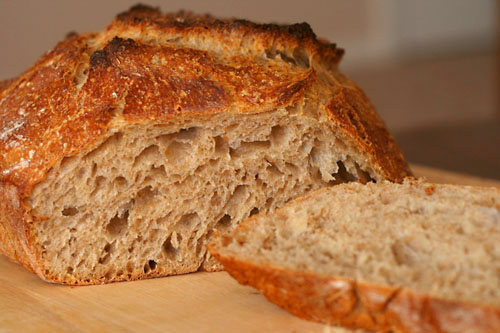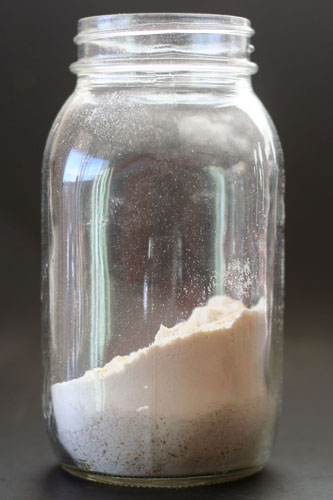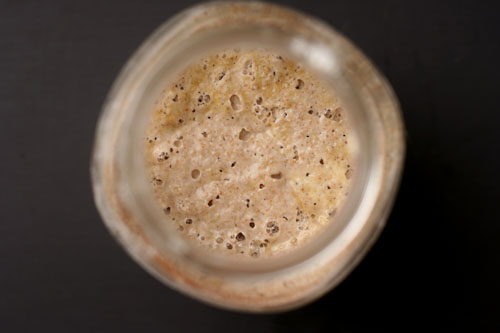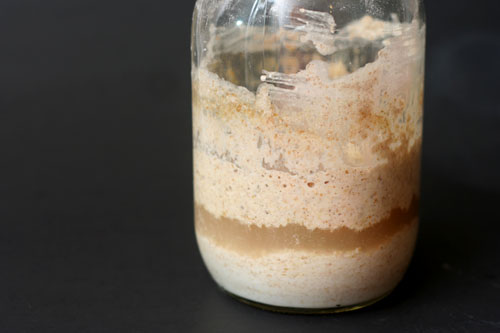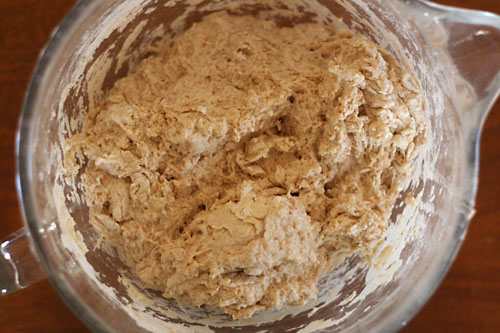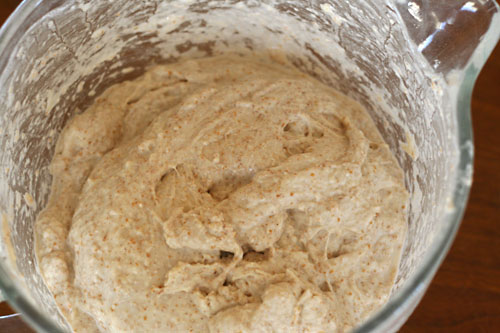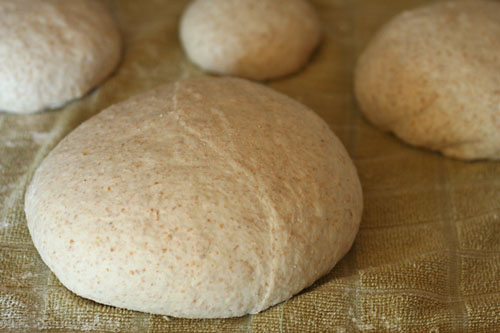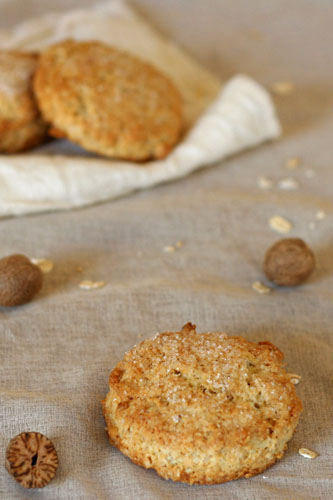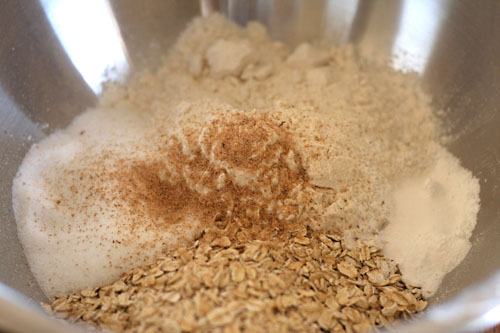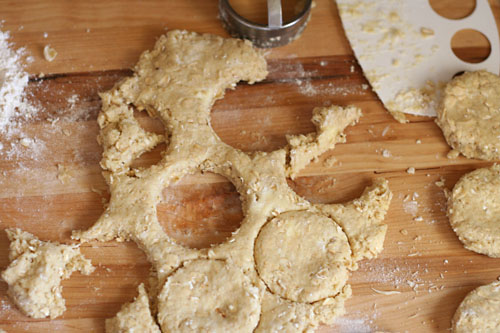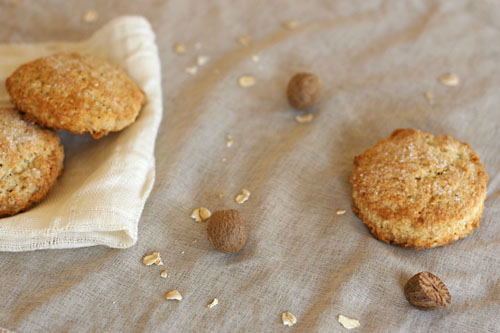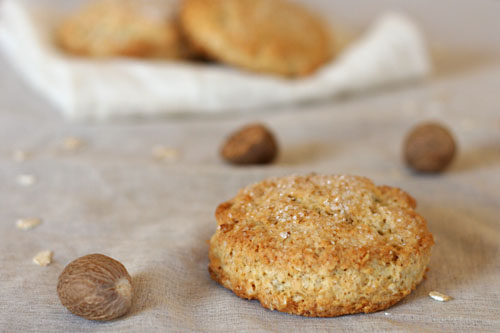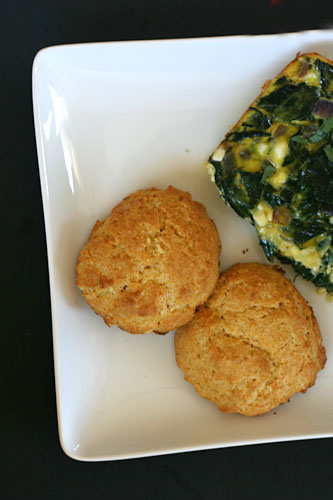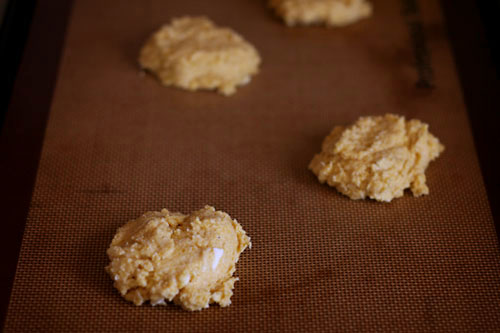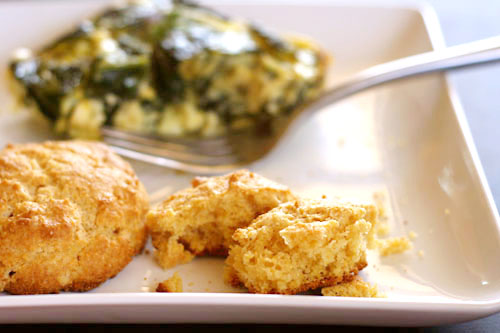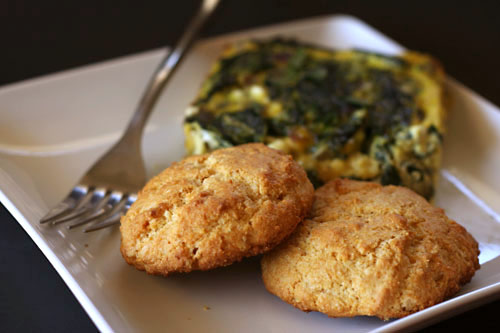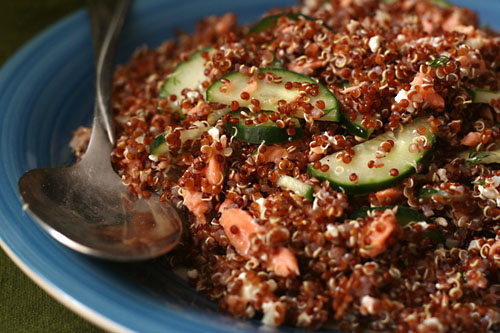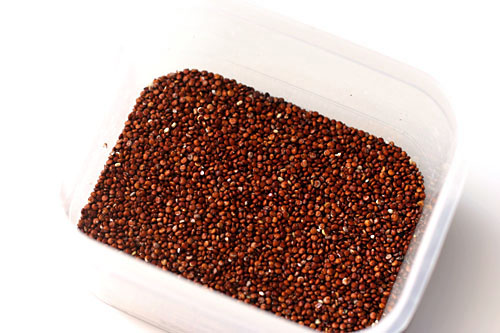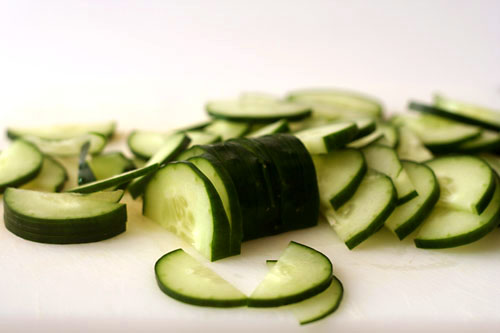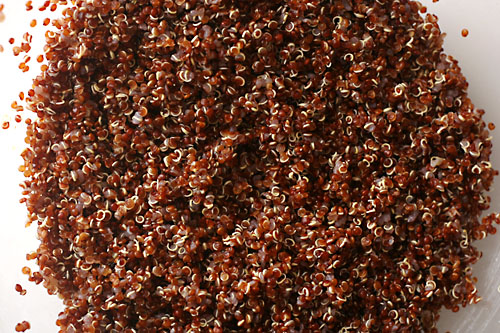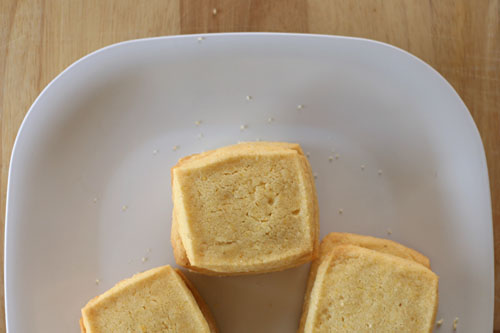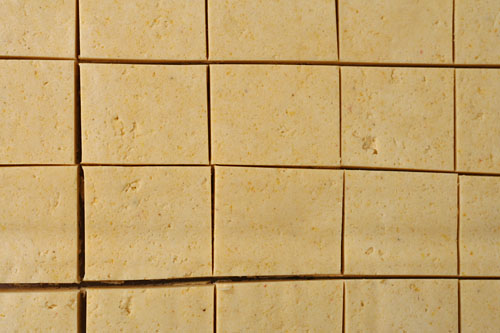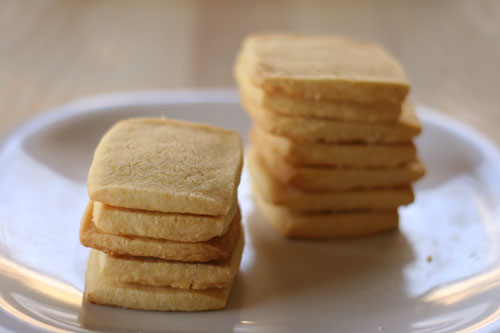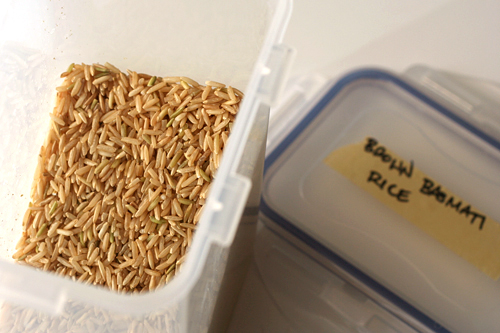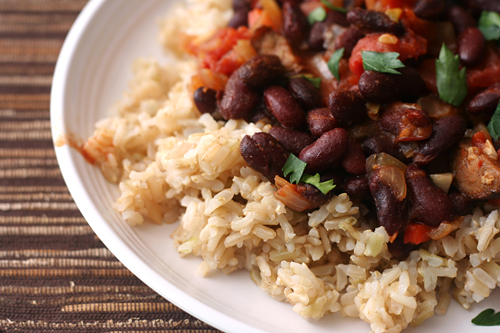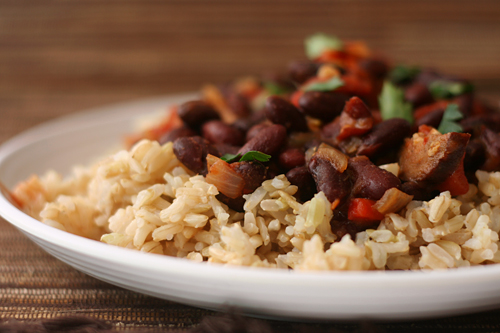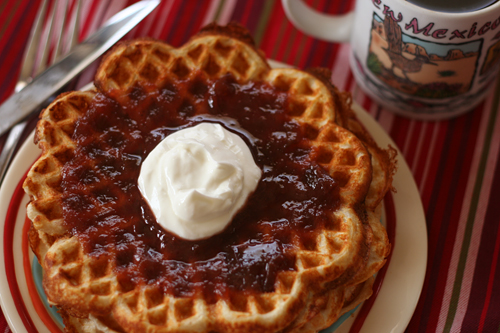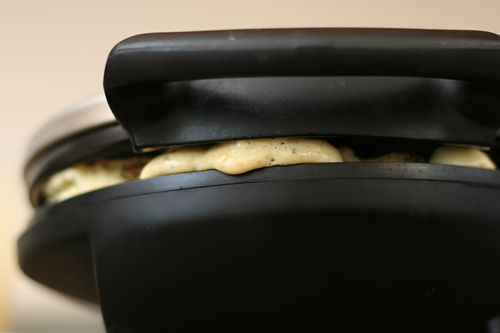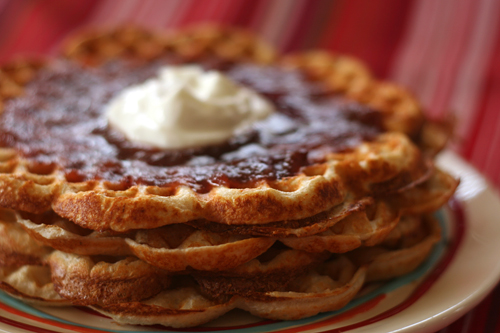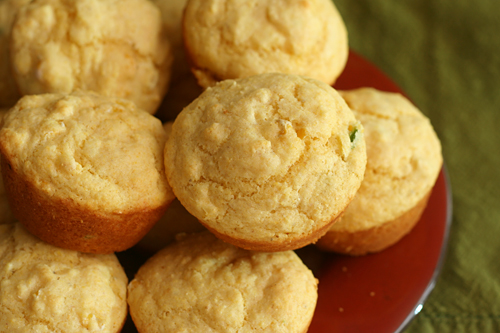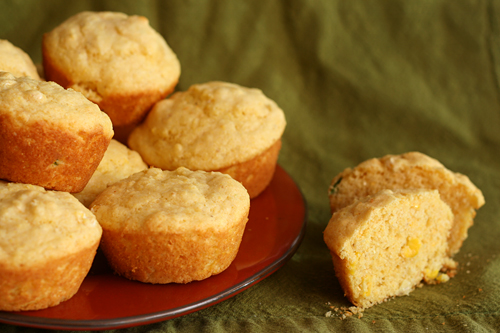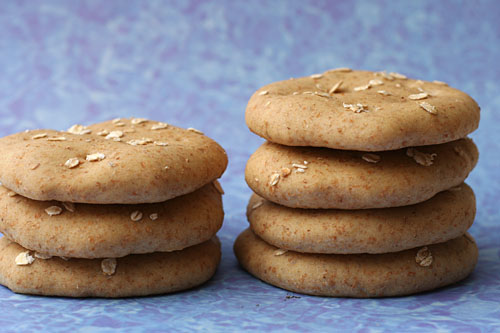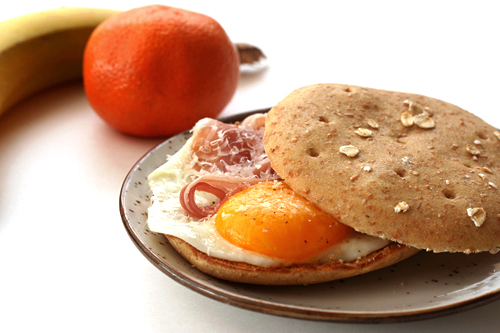I’m not always as practical as I should be. Once I get an idea in my head, I stubbornly cling to it regardless of whether it makes good sense. For example, yesterday I gathered up my laptop, its mouse, a glass of water, and a bowl of farro and lentils and carried it about twenty feet. The mouse kept falling, the water was sloshing over the rim of the glass, and the bowl was sliding around, precariously balanced on top of the laptop. Why didn’t I just make two trips, which probably would have taken less time in the end? It is a mystery.
Why didn’t I bake at least one of the loaves of almond bread in a regular bread pan that I’m familiar with? Why did I insist on baking both loaves in closed pans even though I have no experience baking in covered pans and didn’t know how it would affect the baking time or how I would test for doneness?
My mom found these pans during a mass cleaning of my grandmother’s kitchen, and although they were in their original packaging, there were no baking instructions with them. And the toothpick test doesn’t work when the center of your bread is five inches from the edge of the pan. The outside few inches of each loaf were perfectly baked, slightly sweet, and intensely nutty. The middle portions were doughy, slightly sweet, and intensely nutty. And that was the case for both loaves, because I just had to take a chance with the whole batch instead of taking the safe route with at least one of them. Typical.
One year ago: Jamaican Jerk Chicken
Two years ago: Aligot (French Mashed Potatoes)
Three years ago: Poached Eggs with Arugula and Polenta Fingers
Printer Friendly Recipe
Whole Wheat Almond Bread (adapted from Joy the Baker)
Makes 2 small loaves
This is the baking time for a regular, uncovered bread pan. In a covered pan like I used, increase the baking time to 50-60 minutes and use a wooden skewer inserted into the center of the loaf to test for doneness.
2 cups whole wheat flour
2 cups (9.6 ounces) all-purpose flour
¼ cup (1.75 ounces) sugar
1 teaspoon salt
1 cup sliced, toasted almonds, divided
4 teaspoons baking powder
¼ teaspoon baking soda
¼ cup honey
2 large eggs
1½ cups almond milk
¼ teaspoon almond extract
4 tablespoons unsalted butter, melted
1. Preheat oven to 350 degrees F. Spray two 8.5 by 4.5-inch bread pans with non-stick cooking spray.
2. In a large bowl, whisk together the flours, sugar, salt, baking powder, baking soda, and almonds. In a medium bowl, whisk together honey, eggs, milk and melted butter. Add the wet ingredients to the dry ingredients. Fold until the batter is evenly mixed; small lumps of flour are okay.
3. Divide the batter between the prepared pans. Bake for 35-40 minutes, or until a toothpick inserted into the center of a loaf comes out dry. Set the pans on a wire rack and cool 10 minutes. Run a thin knife around the edge of the pans; invert onto the wire rack. Serve warm or at room temperature.
